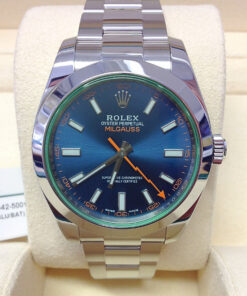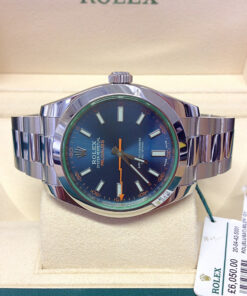Chrome Hearts Glasses
Eyewear is moving beyond plastic and metal.
Exotic materials like leather - wood - enamel - pearl - bone - buffalo horn - and semiprecious and precious gems are in demand — and the industry is taking notice.
“The consumer is looking for that one special piece - ” said Joyce Pokoy-Kurtulus - executive vice president of product design and development at B.Robinson. “Four or five years ago - it might have been loud and over the top - but the consumer has evolved and now wants something supersophisticated and luxurious - yet understated.”
According to Pokoy-Kurtulus - whose company produces eyewear for Judith Leiber and David Yurman - eyewear is becoming more “streamlined” and less “logoed.”
One way brands are differentiating themselves is by uncovering new combinations of materials. Known for a flashier frame incorporating crystals - Judith Leiber is taking a more muted yet still edgy approach for its 2013 collections.
“This whole fluorescent thing is going away — thank goodness - ” Pokoy-Kurtulus said. “We are moving toward rich colors.”
Once focused on weaving neons and crystals into its frames - Leiber is now mixing stones - enamel and leather with deep purples - blues and greens. The effect is not only more modern - but it also appeals to a younger consumer.
RELATED STORY: Eyewear Fired Up on Retro Styles >>
For Yurman - B.Robinson has cycled in green onyx - blue lapis and rust-colored carnelian stones to mimic the brand’s jewelry collections next year. The hope is that the softer color palette will lure in new consumers looking for subtle luxury. And while the color palettes have changed for both Leiber and Yurman - they are still sticking to classic silhouettes - which are integral to their brands’ DNA.
Staying true to the brand’s core is also vital to both Leisure Society and Oliver Peoples. Both brands trade on their classic yet innovative designs.
For Leisure Society - designer Shane Baum hasn’t tried to reinvent the wheel - but he has taken advantage of plating technology that has allowed him to create 12- - 18- and 24-karat gold-plated titanium frames.
“All of our frames are gold - ” Baum said - adding that the brand will integrate diamonds and horn insets into frames. “Without innovations in technology - this couldn’t be possible.”
While Leisure Society’s customized glasses can cost tens of thousands of dollars - the standard frames retail for between $500 and $1 - 500.
“When the economy took a turn - people wanted to be more discreet - ” said Lise Tyler - Oliver Peoples’ design director. “We continue growing with classic silhouettes and think of ways to make them fresh.”
The brand’s glasses retail on average for between $325 and $700. Peoples focuses on vintage looks by using beveled handmade acetate - buffalo horn - enamel and precious metal plating.
Like Oliver Peoples - Morgenthal Frederics’ success is linked to its classic sensibility. Celebrated for its buffalo-horn frames - the brand has been working with the material for roughly eight years - honing the technique of manipulating - layering and dyeing horn - said Jeff Press - vice president of merchandising and design.
“We are looking at new materials - but when you’re a brand like Morgenthal - it’s really about the best materials you can create - ” Press said. “Horn is classic and timeless. Each frame looks totally unique. It gives us a jewelry-type feel.”
But Morgenthal - whose horn frames start at $1 - 495 and run up to $2 - 195 for a pure white buffalo-horn frame - is now thinking beyond buffalo horn - and adding wood to the mix.
Set to launch in August - the brand has worked with Chrome Hearts to release a 24-karat rose-gold aviator with albino madrone on ebony for $2 - 995 - as well as a silver aviator with walnut-wood temples for $1 - 995. Produced by Chrome Hearts - both limited-edition styles will be available in Morgenthal stores next month.
Chrome Hearts - which launched 11 years ago - heralds its unique use of special materials as central to its identity. Inspired by vintage looks of the Seventies with a rocker twist - the brand uses leather - crocodile - wood and pearl inlay.
The use of natural materials juxtaposed with industrial materials such as aircraft-titanium engraved crosses - and precious materials like gold - platinum and diamond - creates a customizable niche product.
“We’ve done tons of optical-industry firsts. We have the most technical frames in the optical business - ” said Chrome Hearts’ technical eyewear designer Troy Schmidt.
Chrome Hearts peppers in more precious materials - like silver and leather - as accents to the frames’ temples. The glasses have also become more wearable — and more expensive.
“We opened up a new market in terms of — you can say price point - but it’s craftsmanship - ” Schmidt said - pointing to the high cost involved in using silver - gold - diamonds and platinum. “Prices have gone up cons
Rolex Watches
A pair of Chrome Hearts frames averages in the $2 - 500 range but can spike to $28 - 000 - depending on how much jewelry and customization a shopper desires. Coming off a recession - it seems hard to believe that people are willing to shell out thousands for frames - but high-end consumers are spending big bucks again — they are just buying less. With more customers looking for unique - high-value product - there has been a crowding of the marketplace. Schmidt called it a “divide” between smaller brands - like Chrome Hearts or Morgenthal - and larger eyewear conglomerates that produce glasses for designer brands.
“There’s a crew that buys the Gucci - Chanel and Dior products - and then there’s that price point that Linda Farrow falls into - and then there’s us - ” he said.
Although Schmidt put Linda Farrow on the other side of the divide - Simon Jablon - Farrow’s creative director - concurred that there is indeed a chasm.
“There’s a break in what we consider luxury and accessible luxury - ” he said - noting that the use of precious materials is spurring the divide. “You can get a designer brand at an accessible price point.”
Jablon said that while “generic” designer labels offer precious materials - the quality isn’t as high.
“It’s middle-quality product designated as designer product - ” he added. “People come to Linda Farrow for more fashion - more statement - more color.”
Like Chrome Hearts - Linda Farrow — which makes its own luxe eyewear line and collaborates with such brands as The Row - Alexander Wang - Dries Van Noten and Oscar de la Renta — works with high-end materials - including pearl - diamonds - gold - alligator - python - lambskin - horn and even mammoth tusks sourced from Siberia.
For its luxe line - Linda Farrow has developed a process to create 24-karat-gold-plated lenses. Eyewear for that collection retails between $500 and $1 - 500 - while frames for Oscar de la Renta - made from wood - buffalo horn and semiprecious stones - including jade and tigereye - generally cost between $400 and $1 - 000. This summer - the company will launch a fine jewelry collection that incorporates 18-karat solid-gold frames with diamonds - sapphires and rubies. The ultraupscale line will start at $10 - 000 and reach the $30 - 000 range.
Despite the use of high-priced materials - there are plenty of industry veterans who disagree with the assessment that there’s a division in the industry that’s linked to quality.
According to Safilo chief executive Roberto Vedovotto - smaller specialty players hold a “very small” foothold in the eyewear market.
“Consumers are going more for branded eyewear - sunglasses and frames - ” he said. “I see a limited amount of people going toward the niche players. People are more interested in designer brands.”
For companies like Safilo - whose brand portfolio really runs the pricing spectrum - focusing on precious materials or limited-edition collections isn’t paramount.
However - Vedovotto stressed that his firm - which produces eyewear for brands such as Alexander McQueen - Dior and Jimmy Choo - mulls over distinctive designs using high-end materials.
Case in point: Safilo is releasing what it calls “liquid wood” sunglasses for Gucci in 2013. Featuring black bamboo arms with gold accents - the frame is actually a new material made from paper - natural wax and wood fiber sourced from a sustainably managed forest. The shaded gray lenses are “mineral enhanced - ” the hinges are made from recycled metal and the packaging is 100 percent recycled - Vedovotto said. The first liquid-wood styles will be in stores by the end of 2013 - but if that’s too long of a wait - non-eco-friendly replicas are currently available for $325.
Safilo will also release a limited-edition style from Bottega Veneta’s fall runway show. Made of black acetate - the sunglasses have braided nappa-leather temples and will be available this fall in Bottega Veneta boutiques. Dior is making over its women’s sunglasses collection with crocodile detailing that will hit stores in December. Pricing for the Bottega and Dior lines has yet to be determined.
Dior will also roll out a fall couture-inspired collection called Taffeta that will retail for $310. Sunglasses from this line have three layers of acetate on the front of the frames - and their temples are covered in leather. “It’s very interesting what’s going on right now. Consumers want something very unique - and we have to follow this trend and provide a uniqueness that goes beyond the usual acetate and metals - ” said Milena Cavicchioli - vice president of marketing at Luxottica. “We are committed to quality and innovation - which means we are trying to find new materials - new finishes.”
Like Safilo - Luxottica - which is the world’s largest eyewear manufacturer - is making a push to add that extra detail to its frames.
For Chanel - that means Luxottica has added mother-of-pearl - ebony wood and calfskin and lambskin leather to the temples of a new color-blocked capsule collection that is already in the brand’s boutiques. Burberry has released a mahogany-wood collection of cat-eye and vintage round optical frames retailing for $310 - while Dolce & Gabbana has launched two gold-plated frames for women and one foldable gold men’s aviator for summer - retailing for $600.
“Procuring these materials is a process. It has a cost - but it also has a meaning - ” said Cavicchioli - who - like Vedovotto - explained that consumers often consider known designer labels before smaller eyewear makers.
“I think first and foremost - consumers look at the brands. We don’t even have to attract them - ” she said. “But - we’re not a threat to those smaller brands. There’s room for everybody.”
She added that the real problem every luxe brand faces is that customers don’t realize the importance of higher-priced quality eyewear and benefits of superior materials and lenses.
“There is no reason why you should wear a very nice bag - have state-of-the-art technology and not have quality eyewear - ” Cavicchioli said. “After all - it goes on your face.”






